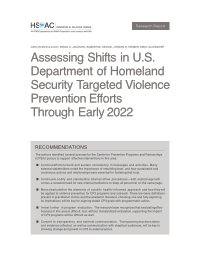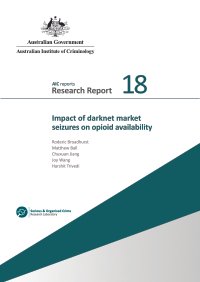By the Board of the Police Commissioner’s Subcommittee to Define Defunding Police.
Executive Summary In Chapter 1, we discuss the genesis of the Subcommittee and elaborate on some of the substantive arguments that shape debates around defunding. We discuss the policy lenses we have used to produce this report, which include a health and disability lens, an Africentric lens, and an Indigenous and Mi’kmaw-led models. Chapter 2 In Chapter 2, we provide background regarding: 1. policing in HRM; 2. approaches to public safety in the HRM; and 3. the history of the movement to “defund the police” in the HRM. We explain how the police are governed, identify that our per capita spending on the HRP exceeds many other cities’ spending, and discuss how the police spend their time based on data they provided us and from Statistics Canada. Chapter 3A In Chapter 3(a), we provide the results of our public survey and our online consultation session. 2351 responses were received to the Subcommittee’s online survey, 19 individuals provided presentations, and 8 organizations provided written submissions. 56.8% of participants in our survey (1308) indicated support for the idea of defunding the police, while 43.2% of respondents (996) did not. Support for defunding was much higher amongst women and gender diverse folks than amongst men. Chapter 3B Chapter 3(b) details the results from a submission from the National Police Federation (“NPF”), which is the union that represents the RCMP around Canada. Two report authors then had a followup meeting with representatives from the NPF. While the NPF takes a strong stance against defunding, there are nonetheless shared areas of agreement and concern about the inadequate funding of social services; the use of police to fill roles that could more appropriately filled by service providers; the need for increased diversion from criminal systems for those experiencing mental health crises; and the complex problem of the police responses to unhoused people. We discuss these commonalities as well as important differences of opinion. Chapter 4 In Chapter 4, we lay out the “framework” for this report’s definition of defunding in Halifax Regional Municipality as a foundation for the rest of the report. We conclude, based on our research and consultation, that there are four “pillars” of defunding: 1. Reforms to police practices, oversight, and accountability; 2. Reforms aimed at “detasking” police and “retasking” more appropriate community service providers; 3. Legislative, regulatory, and policy reforms intended to promote community safety; and 4. Financial reforms aimed at tying police budgets to clear performance metrics and encouraging public participation in municipal budgeting, with the ultimate intention of decreasing budgetary allocations to police and increasing allocations to community-based social services. Chapter 5 In Chapter 5, we discuss reforms to police practices, oversight and accountability. Rather than recommend that the police do more training, we stress the need to evaluate existing training to see whether it’s actually working and also examine how decisions regarding training are made. We recommend a full-scale review of all lethal and non-lethal use of force options available to police, with the aim of reducing use of force and disarming some officers (such as community response officers). We recommend that police policies be available to the public. We argue the Board is failing to adequately govern the police and make recommendations to improve this situation. We recommend that the Board abandon plans to implement body cams and push for meaningful accountability by advocating for progressive changes to the provincial Police Act. Chapter 6 In Chapter 6, we define what detasking is, then recommend that the city consider options to either partially or fully detask: 1. responding to incidents involving unhoused persons; 2. responding to incidents involving young persons; 3. responding to incidents of gender-based and intimate-partner violence; 4. responding to overdoses; and 5. responding to noise complaints. Chapter 6A In Chapter 6(a), we discuss the Mobile Mental Health Crisis Team in HRM, which pairs police and clinical staff, then overview different approaches Canadian and American municipalities are taking to move toward civilian led mental health crisis response. We recommend that Regional Council, in cooperation with the Police Board, divert the majority of crisis calls to non-police-involved teams. Chapter 6B In Chapter 6(b), we discuss different approaches municipalities are taking to remove police from the enforcement of motor vehicle offences and otherwise promote safety on the road. We recommend that the city continue to invest in public transit and traffic calming measures, advocate for the province to reduce the speed limit in residential area from 50 to 40 kilometers per hour, develop a civilian team to enforce motor vehicle offences and traffic-related bylaws and handle road closures for street events and protests and parades, and invest in speed and red light cameras. Chapter 6C In Chapter 6(c), we overview third party reporting programs around Canada, which allow those who have been impacted by sexual violence to report the assault to a non-police community organization. We recommend that the HRM create a third party reporting program and address funding gaps in sexual assault prevention and response services in the municipality through the creation of a grant program. Chapter 7 In Chapter 7, we focus our recommendations to go beyond policing and towards broader social reforms. We focus primarily on mental health and substance use services, affordable housing, and promoting public engagement in municipal budgeting. We recommend that the HRM convene a working group to provide advice on developing a health- and social equity-based approach to drug decriminalization and also establish a grant program for registered non-profit or charitable organizations in order to promote access to mental health and substance use services. In terms of housing, we recommend that HRM uses a human-rights based-approach in developing its strategy to affordable housing and homelessness, and that the Municipality also significantly increase its investment in affordable housing in line with other jurisdictions in the region. In terms of the budget, we recommend that HRM align their per capita spending on the HRP ($393 in 2020) with other peer cities such as London, Ontario ($272 in 2020), and tie the approval of the annual budget to performance metrics. Finally, we recommend that the city establish participatory budgeting processes to let the public decide how to redistribute funds taken from the police budget
Halifax, NS, CA: The Commission, 2024. 218p.





















